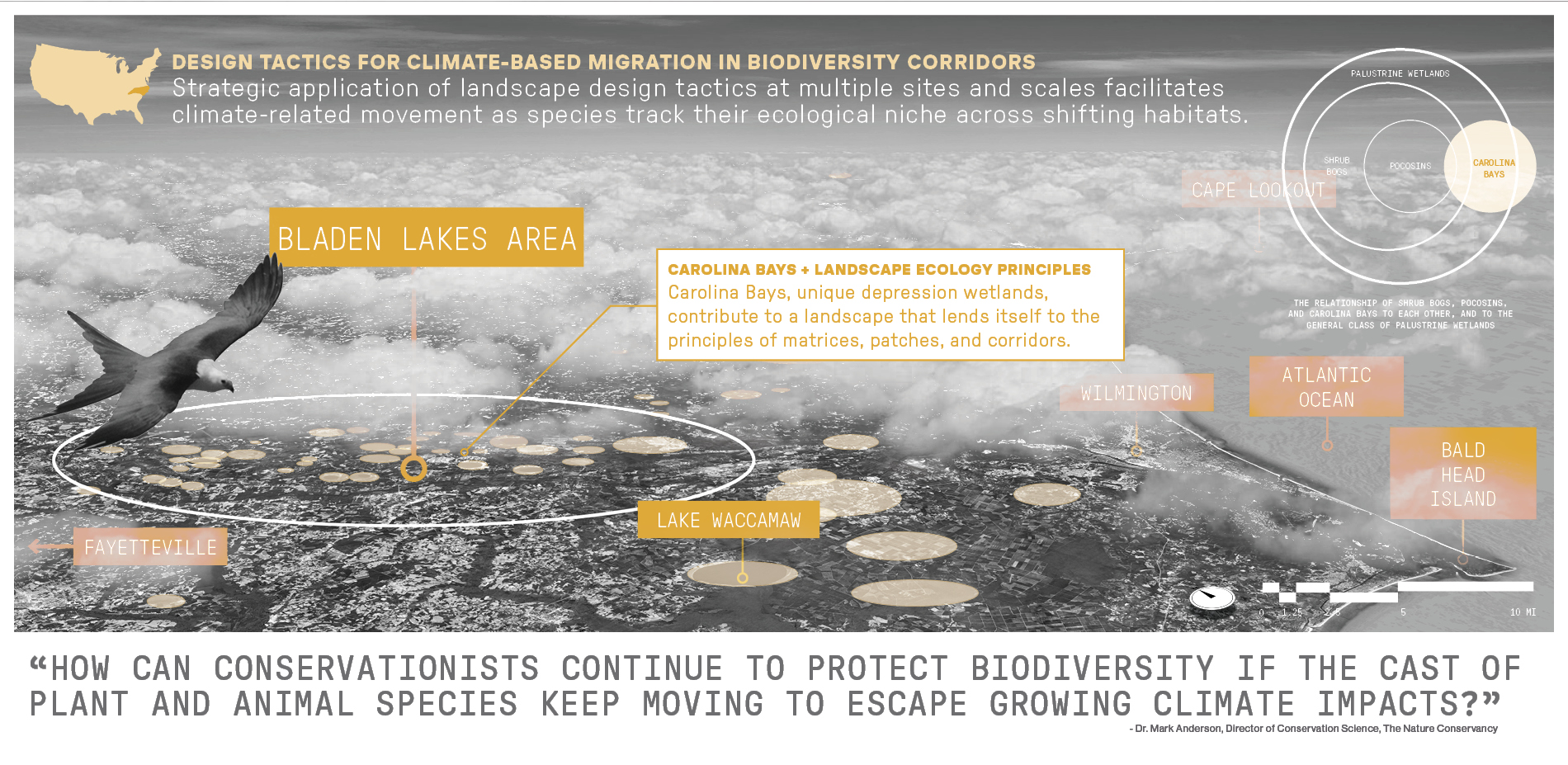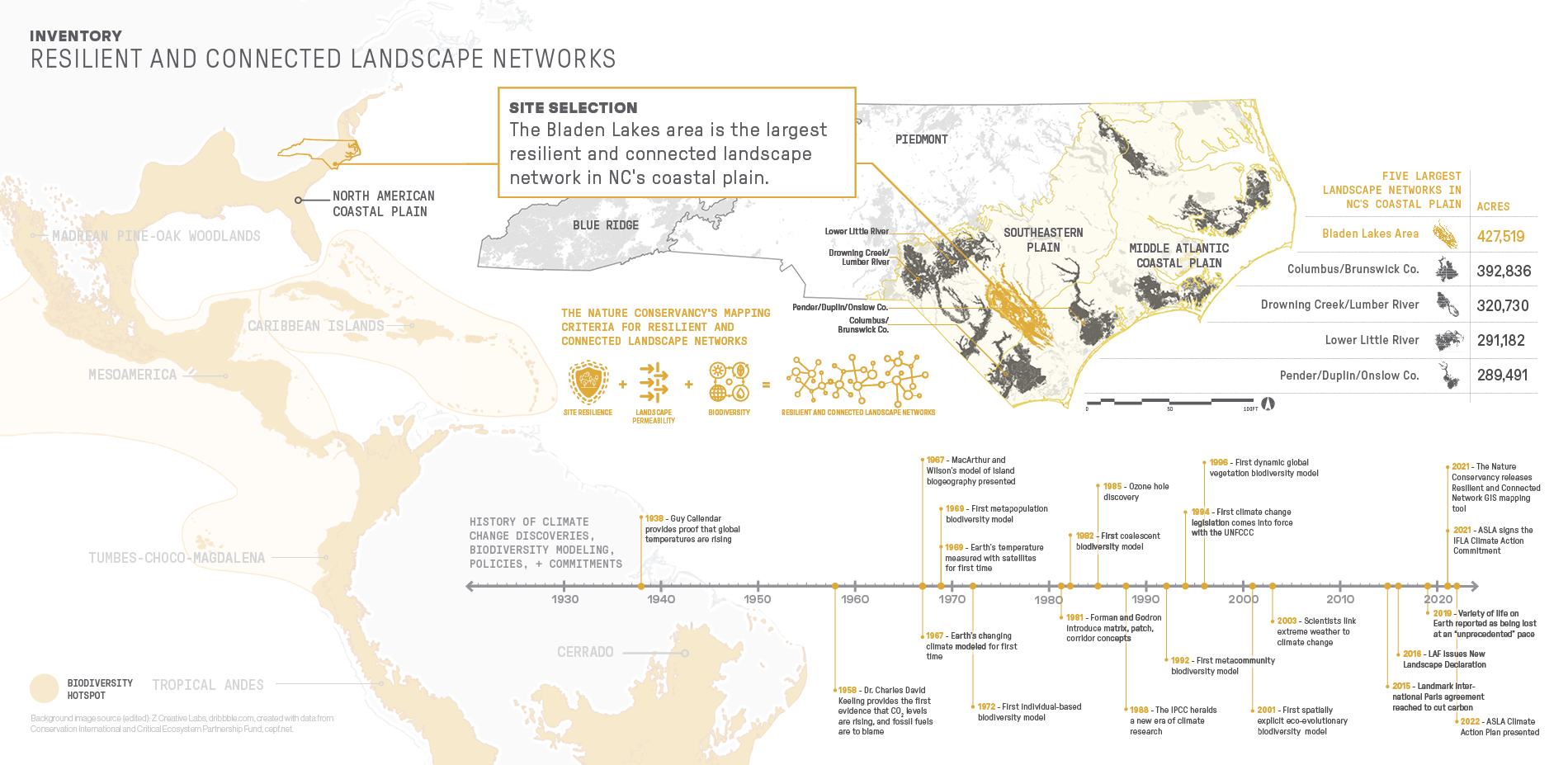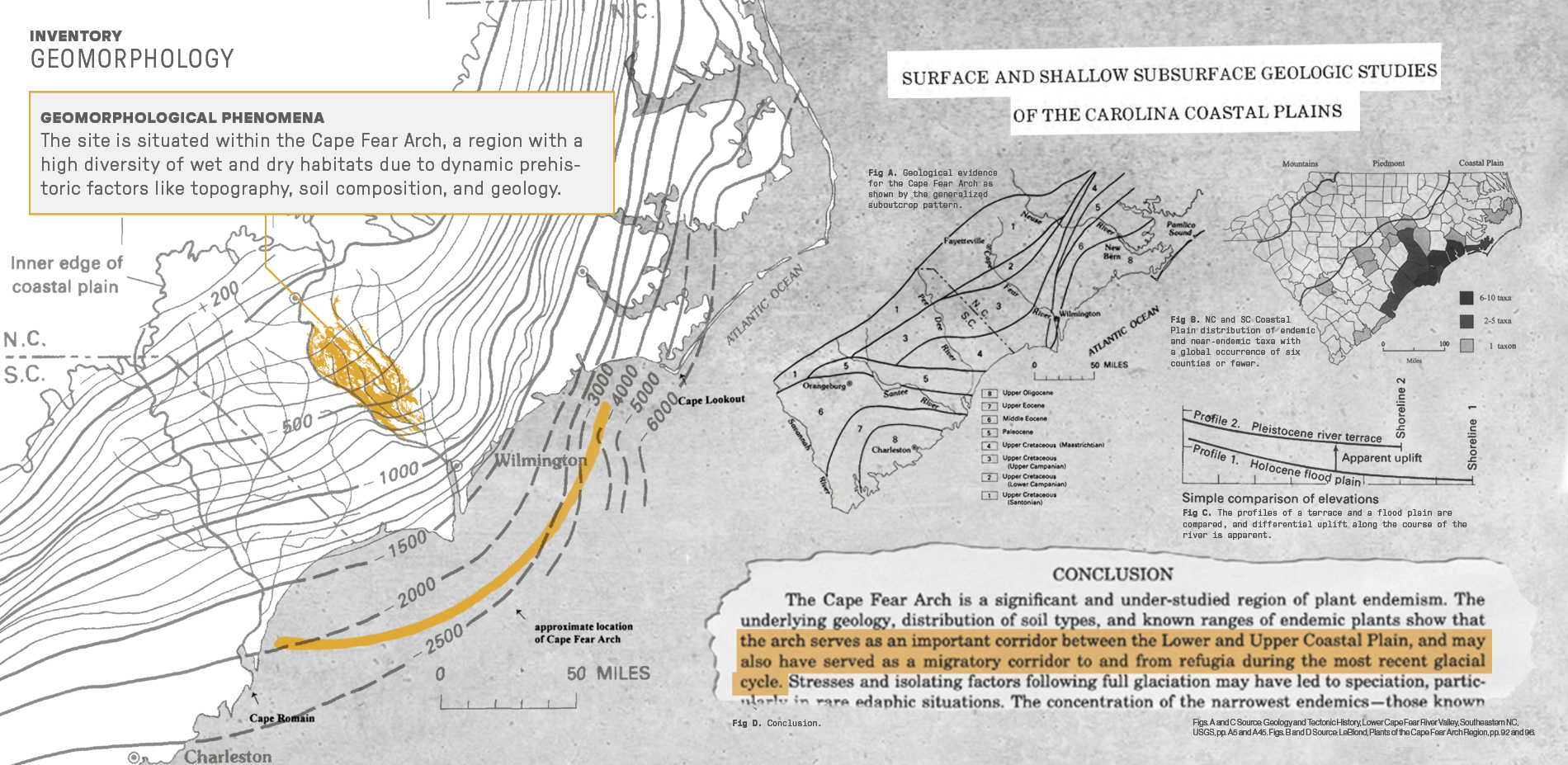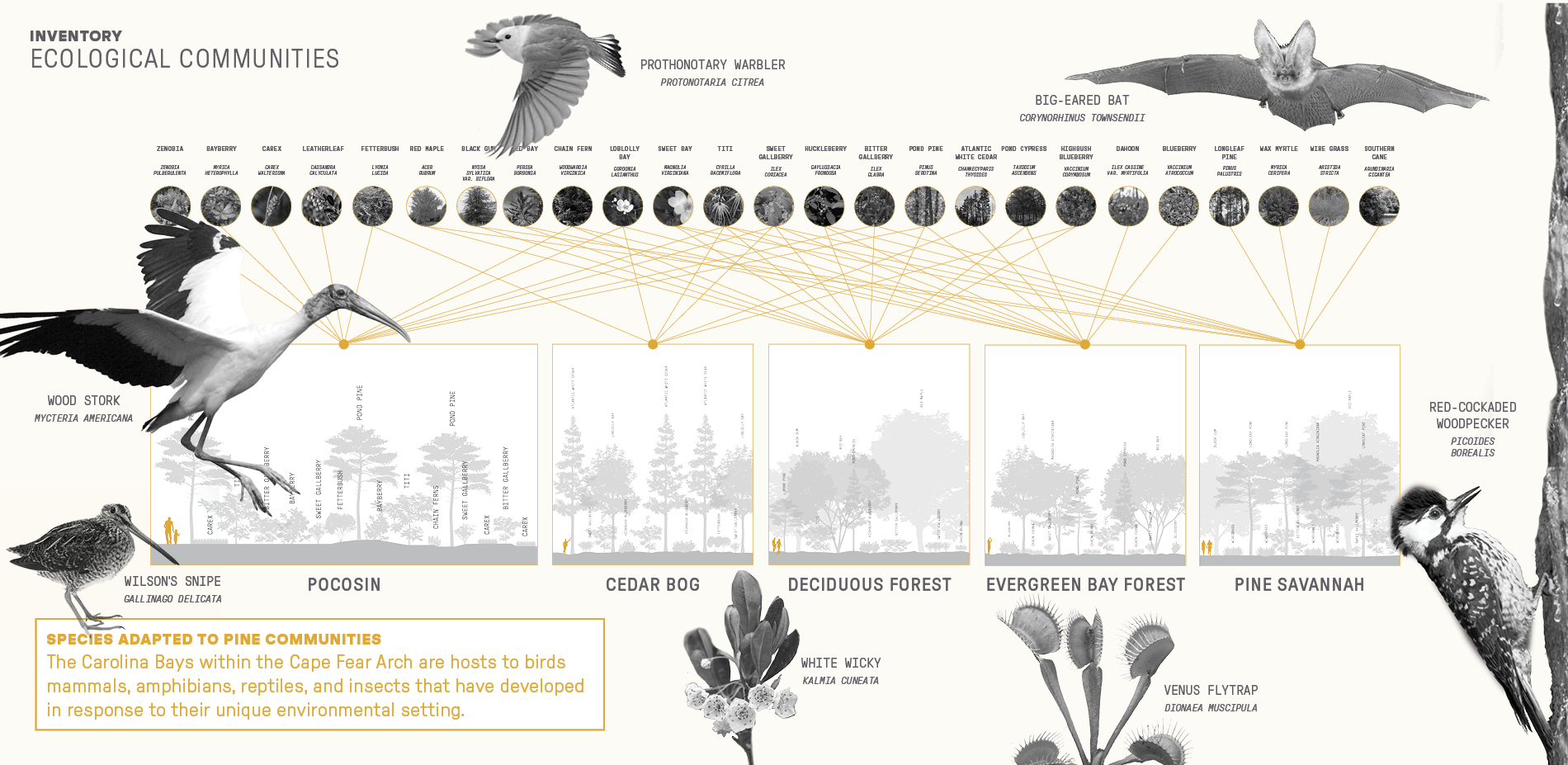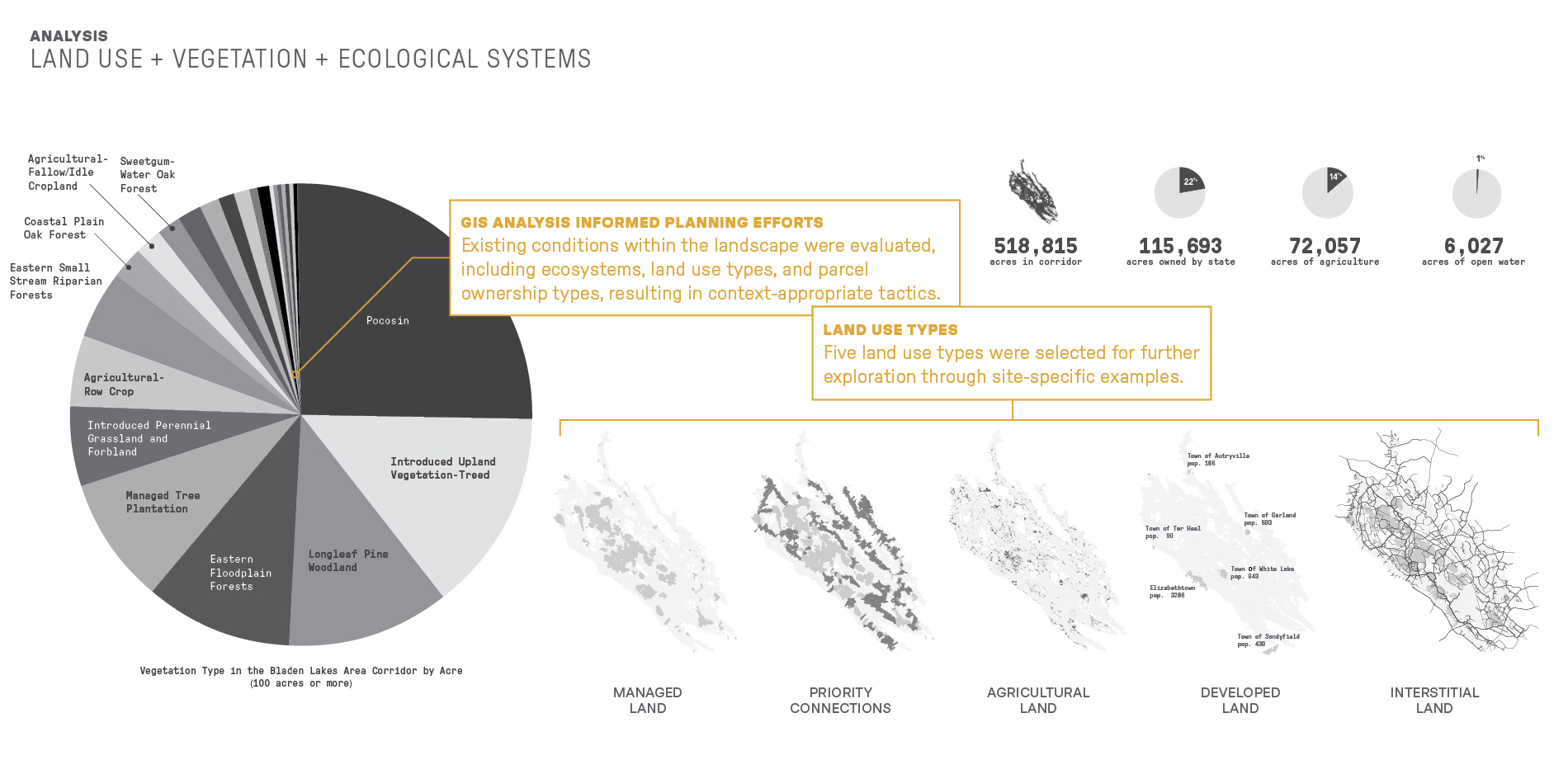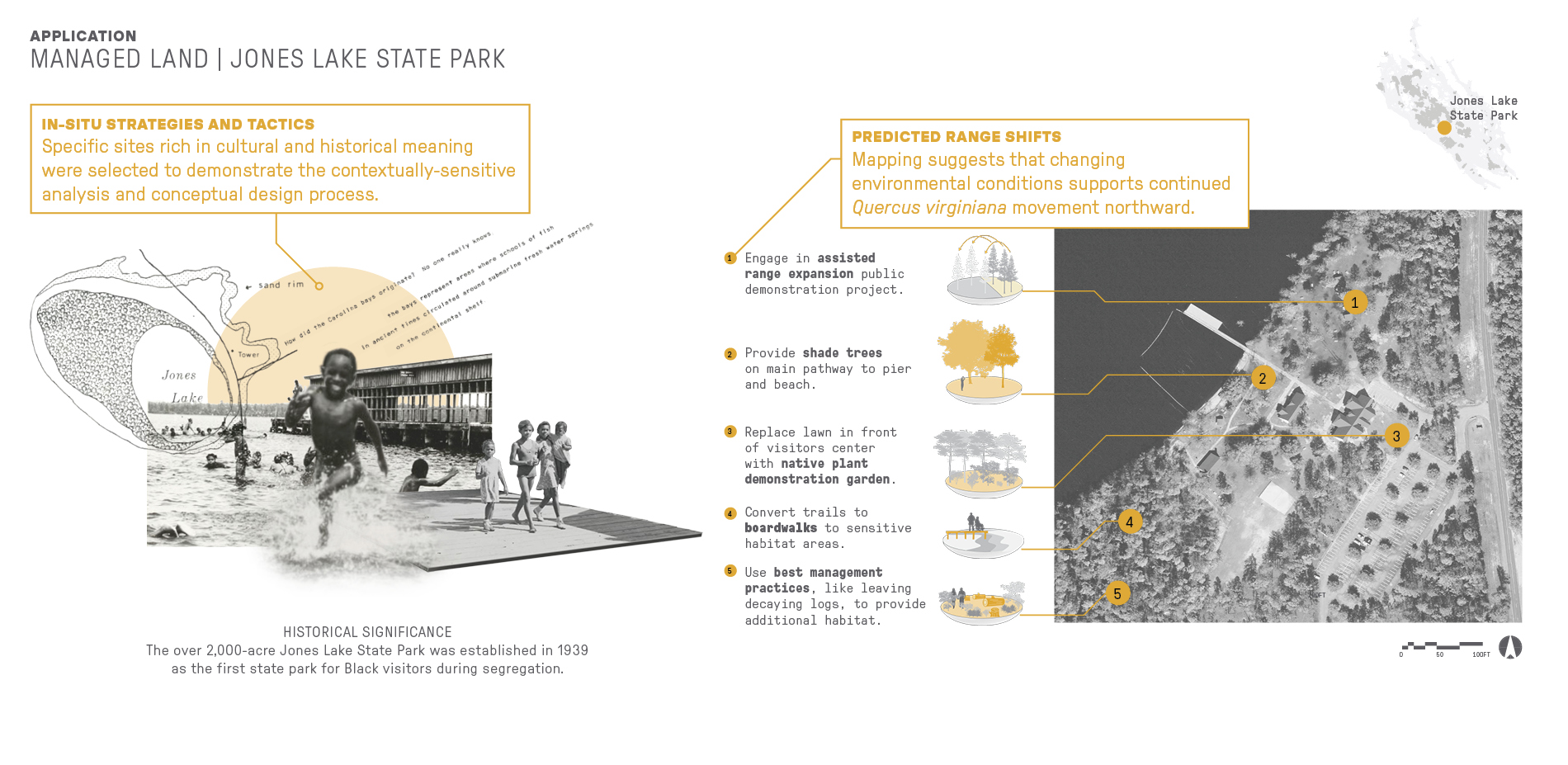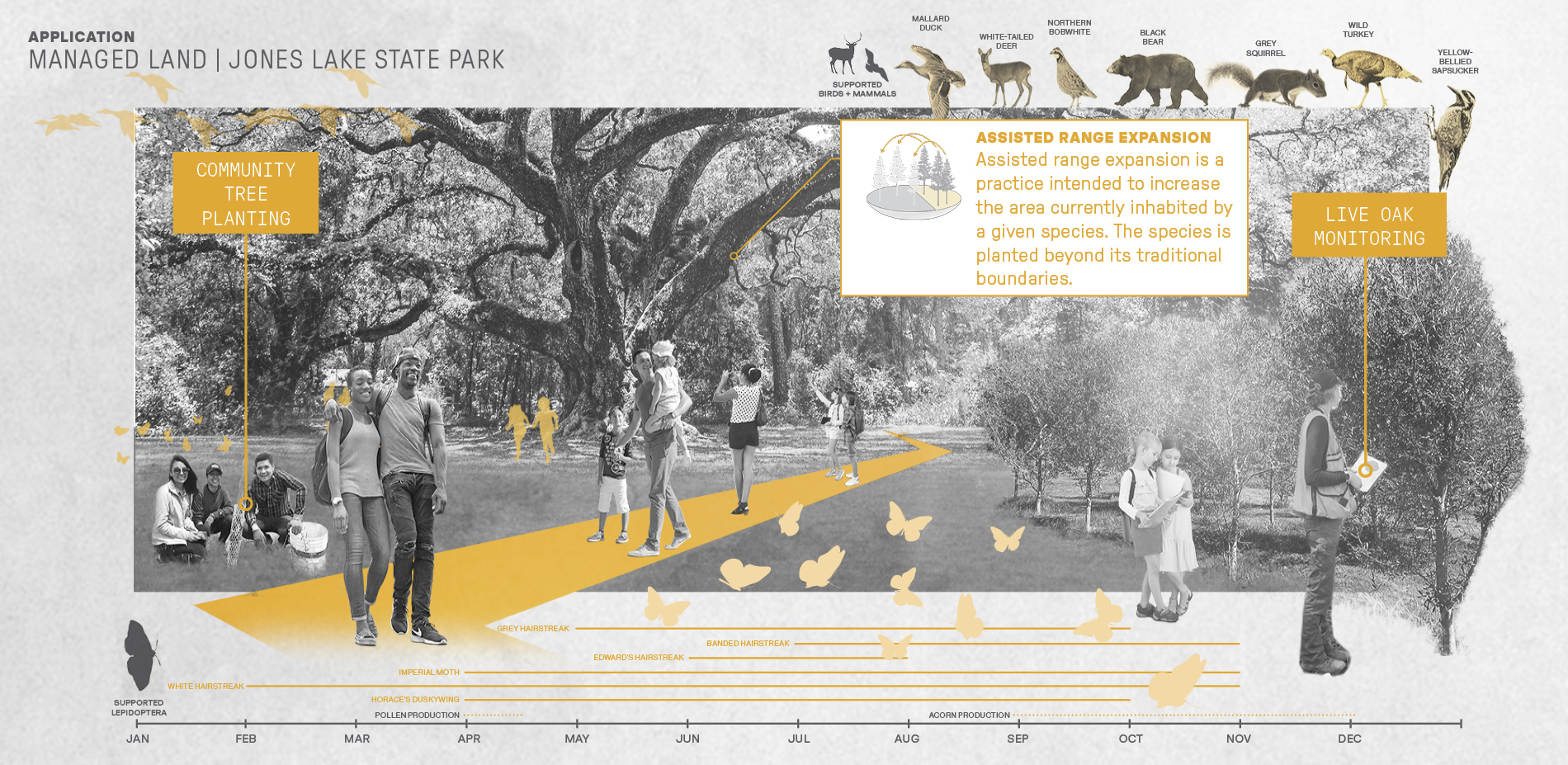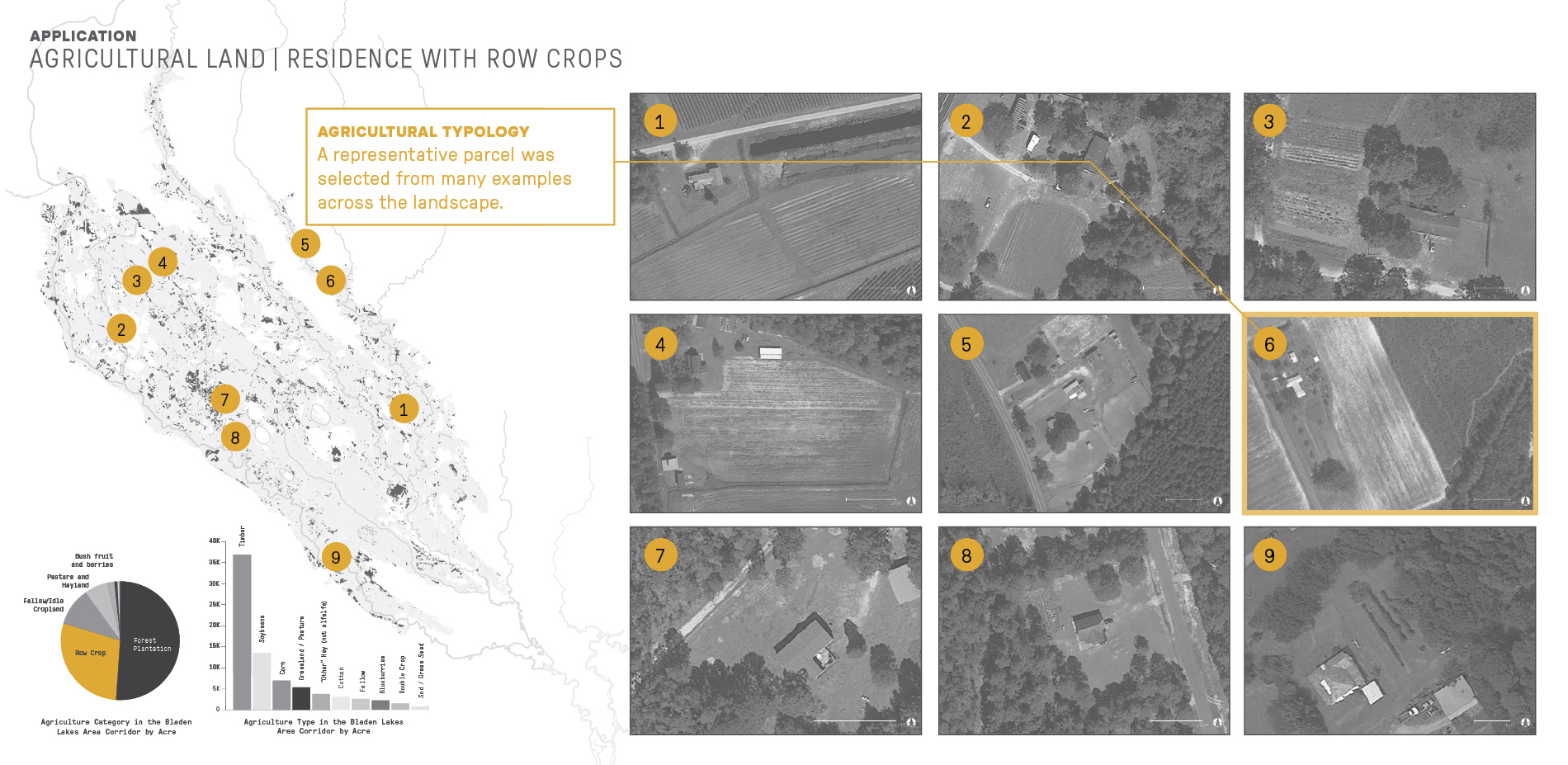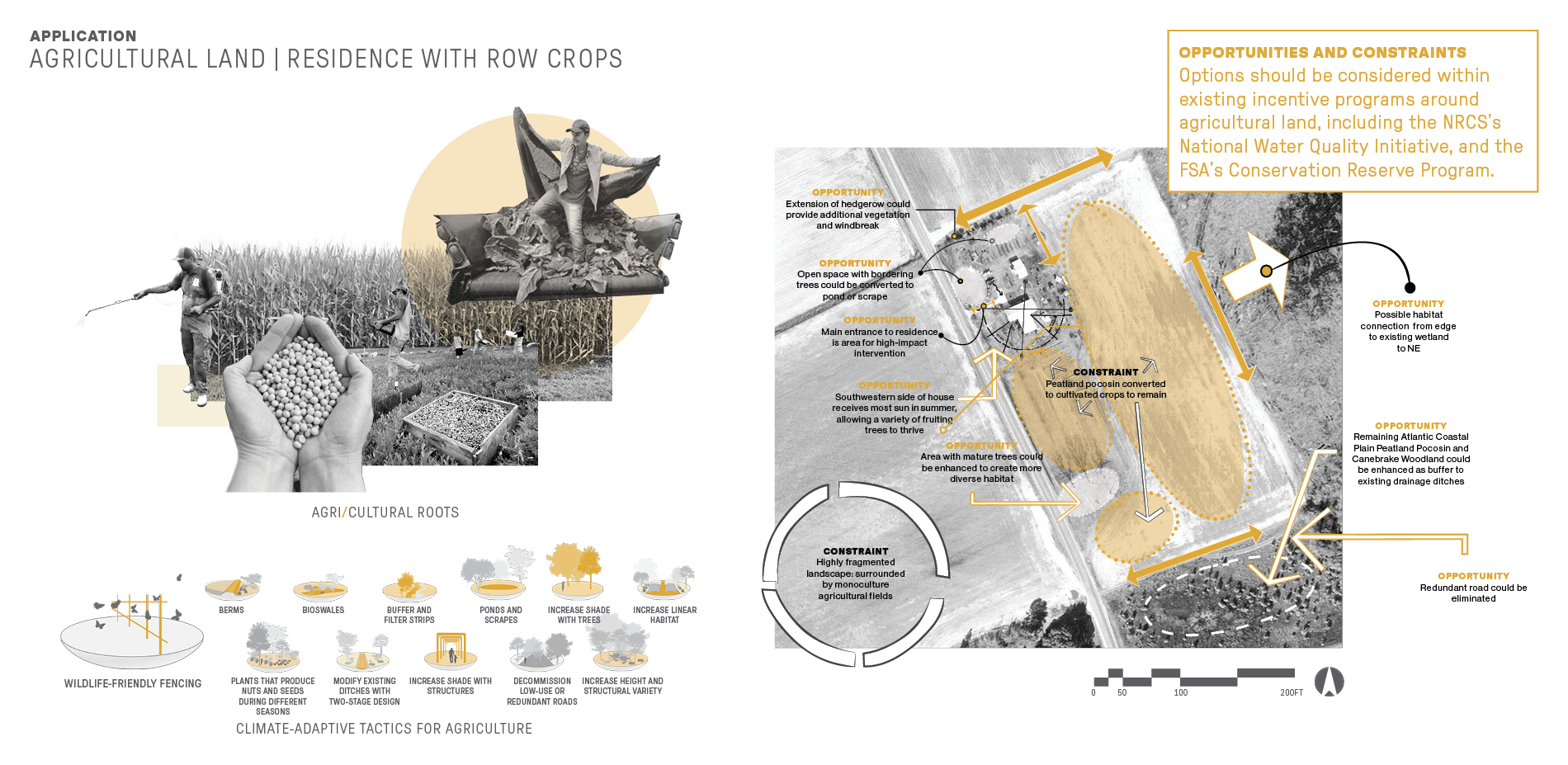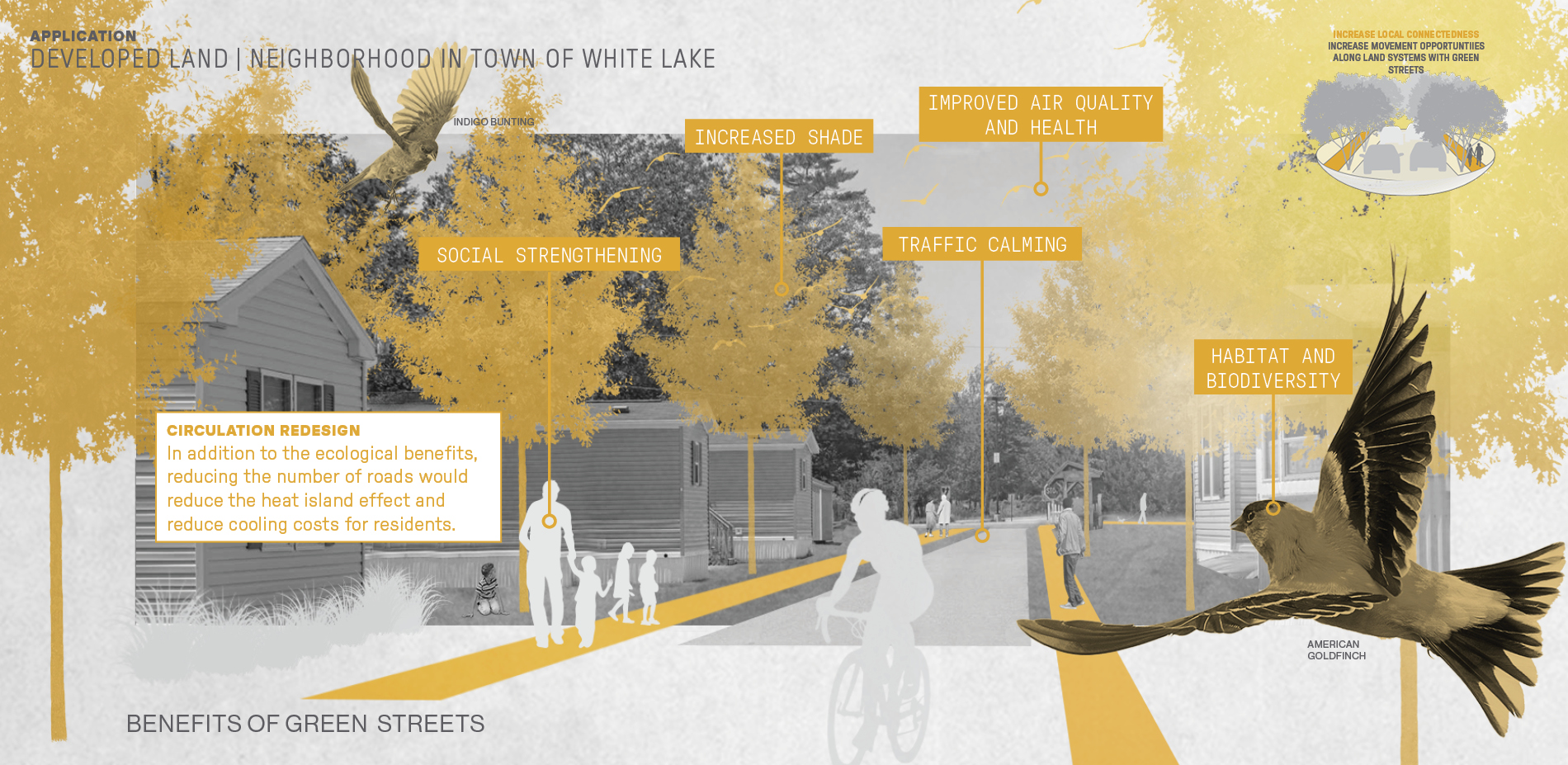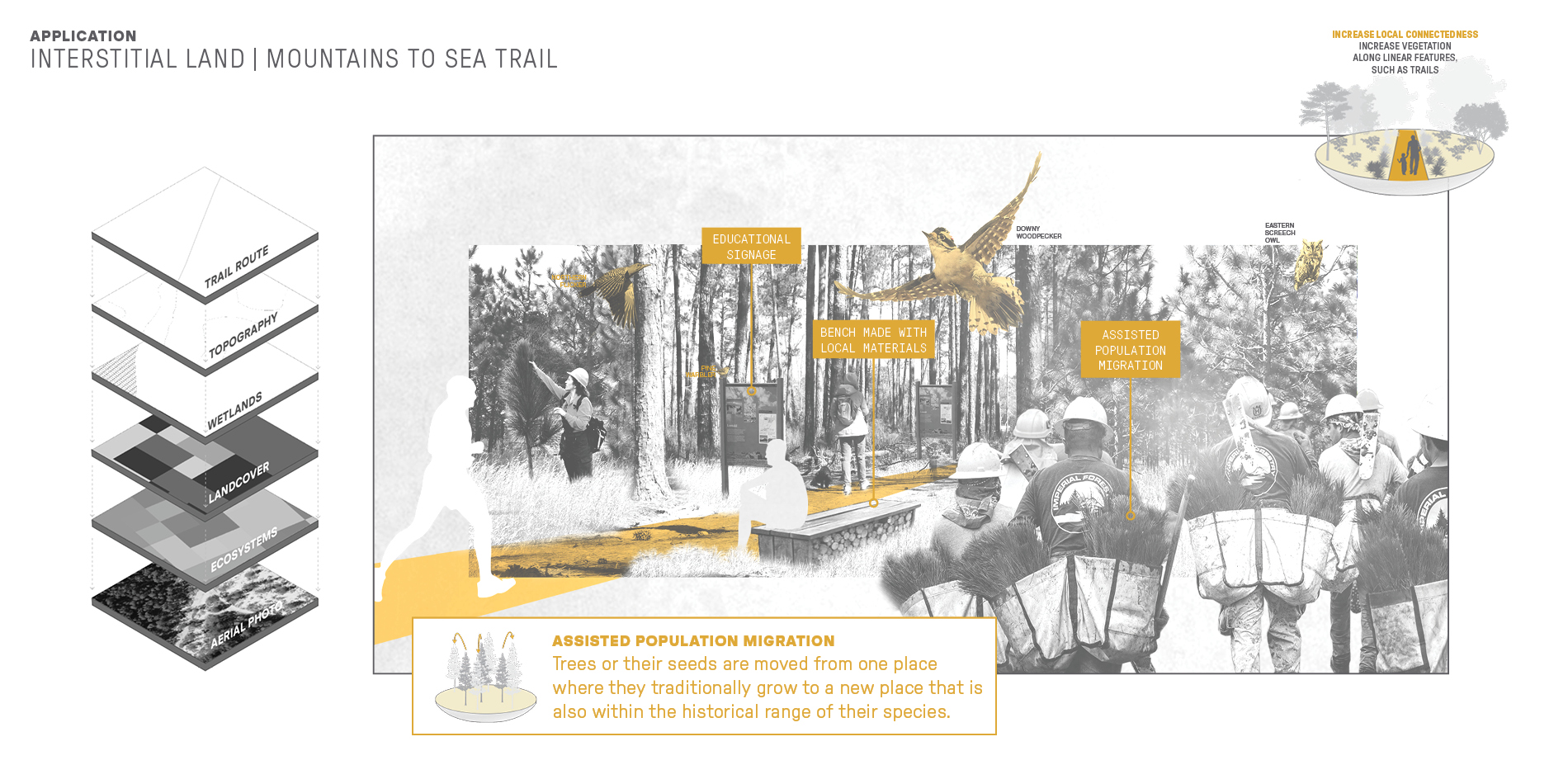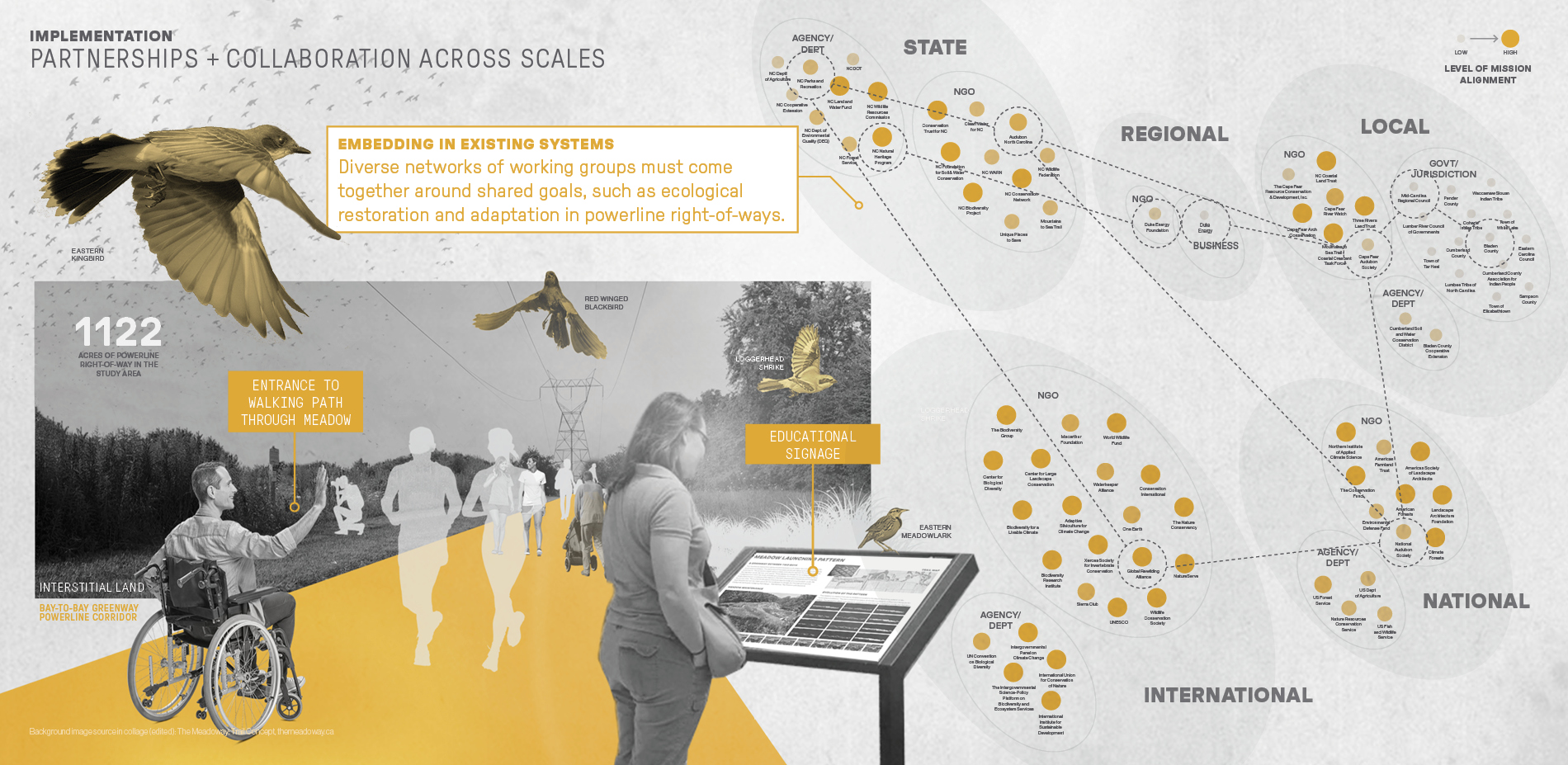Design Tactics for Climate-Based Migration in Biodiversity Corridors
Honor Award
Analysis and Planning
Bladen Lakes Area, North Carolina, United States
Marybeth Campeau, Associate ASLA;
Faculty Advisors:
Madalyn Baldwin, Associate ASLA;
North Carolina State University
Good research and it’s this type of project that moves the needle for our profession. A good look at a model that can be deployed.
- 2023 Awards Jury
Project Statement
This project addresses biodiversity conservation through corridor design, exploring how the strategic application of design tactics at multiple sites and scales can facilitate climate-related movement as species track their ecological niche. The Nature Conservancy has identified “resilient and connected landscapes” across the US. These priority areas for conservation are linkages that could sustain the diversity of a region under a dynamically changing climate. This project examines the largest of these landscapes in NC’s Coastal Plain, resulting in a scalable framework for analyzing, planning, and designing for climate-related species movement. Applied broadly, this model could reduce the catastrophic effects of biodiversity loss.
Project Narrative
Biodiversity Conservation Through Resilient & Connected Networks As humans cause relatively rapid and global changes to our ecosystems, organisms are struggling to adapt in place to climate change. Habitats are shifting, and climate change will be the leading cause of extinction in the next several decades. Facilitating the movement of species through the landscape ecology principles of matrices, patches, and corridors helps reduce biodiversity loss and its cataclysmic effects on ecosystem services. Landscape architects must provide site-specific planning and design that breathes life into climate research, providing benefits to communities and their ecosystems. Embracing this role and designing for large landscapes would re-situate the profession as a leading voice for planetary change as we collectively confront our biodiversity crisis. Using “resilient and connected landscapes,” as identified by The Nature Conservancy, provides a framework for priority areas for corridor conservation that would sustain a region’s biodiversity and facilitate species movement. Implementing design tactics in these areas would improve site resilience, increase landscape permeability, and protect biodiversity.
Ecologically Significant Study Area The Coastal Plain’s designation as the world’s 36th “Biodiversity Hotspot” recognizes that protecting and restoring this habitat has global significance in the effort to address the biodiversity crisis. At 55 miles long and 19 miles wide, the Bladen Lakes area is the largest resilient and connected landscape in NC’s Coastal Plain. This site is associated with two notable geomorphological phenomena, the Cape Fear Arch and the Carolina Bays. The Cape Fear Arch represents the largest amount of biodiversity along the Atlantic Coast north of FL. Carolina Bays, elliptical and uniformly oriented shallow wetland depressions fed by rain or groundwater, enhance the area’s biodiversity.
Contextually Sensitive Tactics for Climate Adaptation Projections indicate that the future in this area is hotter and wetter, with more invasives, pests, and wildfires. Research and analysis identified climate-adaptive tactics that fit into two overarching concepts: protecting a large number and variety of species and protecting the ability for species to move and migrate. Strategies that support these concepts are increasing landscape diversity, increasing local connectedness, and decreasing anthropogenic resistance. Forty-five resulting tactics were organized by 12 approaches. These tactics were applied to a range of sites representing five critical land types within the Bladen Lakes area: managed, agricultural, developed, and interstitial land, and priority connection parcels. Site-specific examples illustrate how in-situ design tactics can honor place and program while promoting climate adaptation that combats biodiversity loss.
Process as Framework This process for determining design tactics and applying them across sites within the Bladen Lakes network is applicable to other resilient and connected landscapes. While the general framework remains consistent, the design process must be local, collaborative, and responsive, resulting in shared decision-making and joint management. The language of landscape ecology principles reveals additional possibilities across scales: by expanding the concept of matrices, patches, and corridors across ecoregional boundaries, this framework is applicable at all jurisdictional and organizational levels.
